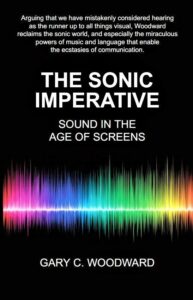Add to our year of bad weather yet another seasonal problem that can obliterate the quieter sounds of fall.
In the scheme of things, some of our problems are more dire than others. Allow me to raise one that may not be on everyone’s radar, but has real negative effects. Leaf blowers are getting to be a nuisance and a threat to the health of those who are even yards away from them.
A lot of inventions have the unfortunate side effect of producing massive waves of air pressure that assault fragile ears. Think of helicopters, which mercilessly beat the air to fight against the forces of gravity. Planes fly with their fixed wings, providing lift by powering forward. But a helicopter’s utility of being able to hover in one place comes at the considerable cost of greater continuous noise. It’s not unusual to hear the pumping sound of one that is still miles away.
Fortunately, it is usually only the wealthy in the most exclusive of neighborhoods that have to hear private helicopters on a daily basis. But the rest of us must deal a smaller version of the same effect of thrashing air that attacks the cochlea in the inner ear. Suburbia and campuses of all sorts are awash with the sounds of ubiquitous leaf blowers that move nearly weightless leaves and particles of dust, all for the sake of monocolor lawns or unbroken expanses of asphalt. In spite of the advice of horticulturists and public health officials to leave well enough alone, leaves and dust are seen as elements that must be blown to adjacent properties. What ever happened to rakes?
In one sense, gas powered leaf blowers are air guns that fire continuously, producing airport levels of noise at pitches where the ear is especially sensitive: usually between 250 to 3000 Hz. Even worse, the carbon monoxide that is also thrown into the air is as bad for the lungs as the sounds of blowers are for the ears. No wonder more communities especially on the west and east coasts are beginning to ban them. The list includes Burlington Vermont; New Rochelle, Oyster Bay, Sleepy Hollow, and Tarrytown in New York, Montclair and Maplewood in New Jersey; Evanston, Glencoe and Highland Park in Illinois; Colorado’s Aspen, Carbondale, and the Denver suburb of Westminster; and a large number of cities in California, including Los Angeles, Malibu, Manhattan Beach, Menlo Park, Mill Valley, Newport Beach, Ojai, Palo Alto, Piedmont and Santa Barbara.
The noise a neighbor creates in pursuit of a minor landscaping objective is a form of environmental disruption: in some ways the equivalent of lighting the exterior of a house with the kinds of bright sodium lamps found in parking lots, or spreading lawn chemicals with odors and toxins that migrate across property lines. We don’t think of excessive sound as pollution. But it is. As I noted in my study, The Sonic Imperative: Sound in the Age of Screens, it makes sense to think of noise as aural refuse. It’s another kind of tangible junk that degrades a space.
Granted, blowers can tidy up a property in short order. Full disclosure: I have one as well that gets limited use for just a few minutes at a time. A “short duration” rule doesn’t completely take me off the hook, but one practical issue with these devices is the long lengths of time that these noisy two cycle engines are allowed to run. At work I’ve had students try to hear above four “backpack” leaf blowers outside the windows of my classroom. It’s always a lost cause; their presentations lose out to the machines used to comb acres of groomed lawn. In several instances the fracas resulted in some heated exchanges with members of the landscape crew in what should have been a tranquil environment. Those guys were just following orders. But like the rest of us, they probably didn’t think much about how a manufactured racket can deprive others of their right to be left undisturbed.
![]()



